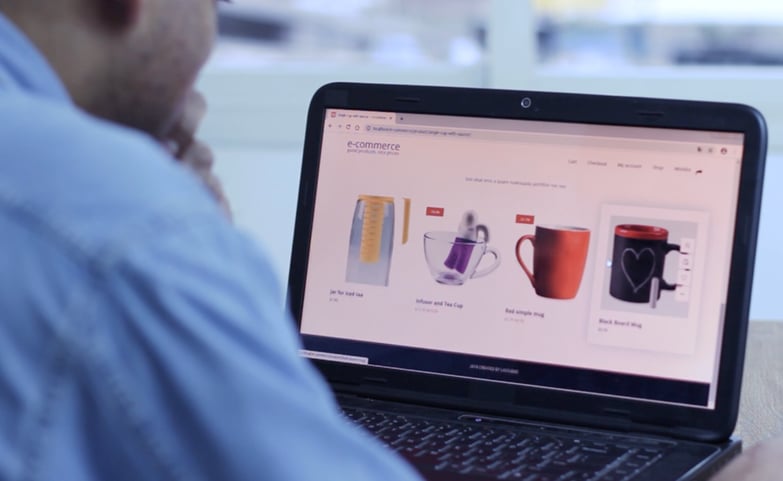In the retail world, barcodes have been a silent but essential force for over half a century. We've all encountered those familiar 1D barcodes — neat rows of vertical lines on product labels. They streamline the checkout process, automate price lookup, and make our shopping experiences more convenient. But as technology advances and consumer demands evolve, these traditional barcodes are reaching their limits and are increasingly being replaced by more comprehensive 2D barcodes. Customers now want more than just a price tag; they crave comprehensive product information. In fact, 85% say product information and pictures are important to them when deciding which brand or retailer to buy from.
This is where 2D barcodes play out their advantages. Unlike their linear predecessors, 2D barcodes can provide a wealth of data that gives consumers a deeper understanding of a product's story. According to Brand Vinson, the product marketing manager of Wasp Barcode Technologies, "The biggest breakthrough in barcode technology has been the invention of 2D barcodes and camera-based 2D image readers." Managing them in Product Information Management (PIM) systems, connected with all the up-to-date information in one single repository, allows 2D barcodes to carry more relevant data in real-time.
Let's delve into how the synergy of 2D barcodes and PIM is enriching the shopping experience and empowering businesses to meet evolving customer expectations.
Customers are expecting more information than ever
We are living in the era of big data, where consumers' appetite for information about the products they buy has increased significantly. They seek details ranging from a product's origins to its optimal usage and recycling guidelines. Meanwhile, businesses are grappling with a double challenge: staying compliant with evolving regulations and managing the massive influx of data originating from diverse sources and in various formats. That explains why every year, poor data quality costs organizations an average of $12.9 million. And why 40% of consumers have returned an online purchase due to inaccurate product content.
Amid this data-intensive backdrop, the imperative for businesses is clear: adapt and innovate to remain competitive. This is precisely where 2D barcodes step into the spotlight. By embracing this technology, businesses can fulfill consumer demands for comprehensive product insights, personalized shopping experiences, and compliance with ever-evolving regulatory requirements. Additionally, PIM systems play a pivotal role in meeting these demands by serving as a centralized hub for product data management. PIM systems can seamlessly integrate on-the-fly barcode generation, making them an ideal solution for businesses seeking to use 2D barcodes to provide rich product information.
So, what exactly is a 2D barcode?
A 2D barcode represents an evolution in data encoding and retrieval. Unlike its one-dimensional predecessor, a 2D barcode presents information in two dimensions using a grid or matrix of squares, dots, or other geometric patterns. This allows a 2D barcode to store a wealth of data, transforming it from a mere product identifier to a multifaceted source of information. It can encode not only product numbers but also intricate details about a product's origin, ingredients, usage instructions, and even links to online resources. To tap into all this extra information, you just need a simple scanner or your smartphone camera.
The advanced details consumers are looking for can all be embedded in the 2D barcode. Unlike a UPC code, it all fits into a smaller footprint. This makes it an ideal choice for various labeling and product applications where space optimization is crucial. Additionally, organizations can fully harness the power of 2D barcodes by encoding them with a GS1 Digital Link, enabling connections to all types of B2B and B2C information. As GS1, the standards body for barcodes, points out, this technology has the potential to deliver "improved inventory management, enhanced recall readiness, greater sustainability and ethical sourcing, better product authentication, and greater brand trust."
What benefits does a 2D barcode provide over a traditional barcode?
2D barcodes offer significant advantages in today's consumer-driven landscape, where 53% of shoppers always research before they buy to ensure they are making the best possible choice. The innovations incorporated in 2D barcodes give them certain advantages over 1D barcodes:
- Higher data capacity
Unlike traditional barcodes, which primarily contain numerical product identifiers, 2D barcodes can encompass a wide array of details. With a limit of 20 characters, 1D barcodes simply lack the data capacity for inventory management, robust traceability, or combatting counterfeit items. 2D barcodes, however, can hold up to 7,000 characters (depending on the format), allowing businesses to deliver comprehensive product information to consumers, enhance transparency, and improve customer engagement. - Direct link to digital content
2D barcodes offer a direct gateway to digital content, much like a URL leads to a specific website. These barcodes can link consumers to numerous digital resources, such as instructional videos, product reviews, or promotional offers, through a simple scan. The GS1 Digital Link further amplifies this capability by enabling connections to many product-related information sources, which provides increased versatility in terms of the content that can be linked. - Customizable design
Unlike the standardized appearance of traditional barcodes, 2D barcodes offer greater design flexibility. Companies can customize the visual elements of their 2D barcodes to include brand elements, logos, and artistic designs. This departure from the uniform appearance of 1D barcodes not only improves packaging aesthetics but also reinforces brand identity. Providing visually appealing and distinctive barcodes adds an extra layer of creativity to product labeling and marketing strategies.



